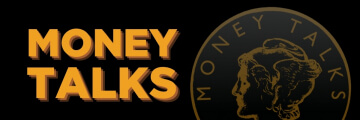
Money Talks provide members a forum in which to share their views and research with fellow hobbyists. The numismatic lectures are presented each year at the World’s Fair of Money® and the National Money Show®.
The Ultimate Large Cent Date & Type Set
This presentation will offer the ultimate eye-candy journey through the large cent series, with surprise tidbits and related revelations that will entertain you and leave you wanting more.
Instructor: John Wright
Pay Warrants of the Texian Navy
We all remember the Alamo, but the navy was the savior of the Republic of Texas. Printed on orders from Commodore Edwin Moore, the pay warrants of the Texian Navy were repudiated by President Sam Houston. They may hold a clue to the mutiny aboard the San Antonio.
Instructor: Michael E. Marotta
Strategies to Dispose of Your Collection
Many collectors do not know what to do with their collection before they cross the “Great Misty Veil of Life.” Often, their spouse and/or children are not familiar with numismatics nor the least bit interested in the hobby. Should a collector die without a specific strategy in place, the family is left with a big mess. Should you sell your collection before passing, or how can you help your relatives liquidate your collection upon your demise?
Instructor: Rod Gillis
An Introduction to Collecting Colonial Paper Money—“Tis Death to Counterfeit”
The presentation will discuss the need for paper money in colonial America, their issue by the colonies and the Continental Congress and contemporary counterfeiting. Reference books and methods of collecting will be presented. Examples from several colonies and the Continental Congress will be shown and discussed.
Instructor: Raymond Williams
Siege Stories: Tales of Courage & Defiance
Siege warfare has generated
a fascinating area of numismatics. With it comes its share of heroes, heroines and villains. Dr. Korchnak will use coins, medals and tokens to bring these characters to life with excerpts from his soon-to-be-published work on siege coins, OBSIDIONAL COINS OF THE WORLD, 1453-1902.
a fascinating area of numismatics. With it comes its share of heroes, heroines and villains. Dr. Korchnak will use coins, medals and tokens to bring these characters to life with excerpts from his soon-to-be-published work on siege coins, OBSIDIONAL COINS OF THE WORLD, 1453-1902.
Instructor: Lawrence C. Korchnak, Ph.D.
Origins of Money
It may be hard to imagine a world without coinage, but for most of human existence, trade within communities and regions was handled without coins or paper money. Many types of objects have been used as money, from carved stones to the feathers of rare birds. The only requirements were that the objects be reasonably available and durable. Learn about early forms of money and how it changed and eventually led to the development of coinage during the 1st millennium B.C.
Instructor: Doug Mudd
Rushing Through Panama: A Story of Numismatics on the Journey to the American Gold Rush
Using primary sources and other relevant information, this presentation focuses on the intricate nature of numismatics during the American Gold Rush—a watershed moment in U.S. history, often overlooked by what came after miners arrived in 1850s California. The coins and currencies used during this westward journey will be discussed.
Instructor: Jack E. Topping
Before the Coinage Act of 1857: How Americans Spent their Foreign Money
This talk focuses on the way foreign money circulated on a day-to-day basis. Whether converting money from one currency to another, pricing goods in “shillings/pence” into the 19th century, or constantly worrying about counterfeits, Americans depended on a common “toolbox” of methods to navigate this complex system.
Instructor: Jesse Kraft
Artistry and Technology—How the Large Cent Dies Were Made
This talk uses image analysis of early U.S. copper coins to show how the engravers produced the large-cent dies. The U.S. Mint was an entirely new undertaking in 1792. Nobody who worked there during that time had any meaningful experience with coinage, and the technology they had was at least a century out of date in Europe. Nevertheless, by the spring of 1793, Chief Coiner Henry Voigt was creating hubs to produce the dies for circulating coinage. Robert Scot, first chief engraver, used hubs by Voigt and himself to produce new designs in the late 1700s. Scot’s techniques persisted through the second chief engravership of William Kneass. Both Voigt and Scot produced highly artistic designs, despite the fact that neither had any die-sinking experience prior to working at the Mint. In the early 1830s, Franklin Peale spent two years in Europe learning about the technologies in use there. The coins that Christian Gobrecht, third chief engraver, produced show how he applied several of these new methods to the creation of his dies. The coins tell us a great deal about how they were made; all we must do is listen to them.
Instructor: Bill Eckberg
30 Minutes at the First Philadelphia Mint
The Coinage Act of 1792 established the Mint at Philadelphia. The facility remained in operation through 1832, and a new, second mint building was occupied in 1833. The 40-year history of the first mint will be explored in a 30-minute presentation, discussing important people, coinage issues, and related topics.
Instructors: Mark Borckardt
George Clapp, Charles Clapp & Robert Book—Pittsburgh’s Numismatic Copper Trio
The personal and numismatic lives of these three men are one of the most interesting stories that can be told. Unfortunately, much incorrect information has been published. This PowerPoint presentation will set the record straight by providing evidence from the archives of the ANS, the Carnegie Museum and the Archives of the Western Pennsylvania Numismatic Society.
Instructors: Charles F. Heck & Wayne Homren
Symbols of the Sun God on Coins of the Eccentric Emperor Elagabalus
The Roman emperor Marcus Aurelius Antoninus, known to history as Elagabalus, served as chief priest of the Syrian sun god El-Gabal. This talk explores the significant proportion of Elagabalus’ coins that reference the sun god through symbols such as stars, stones, and the emperor’s priestly accouterments.
Instructors: Michael A. Kodysz